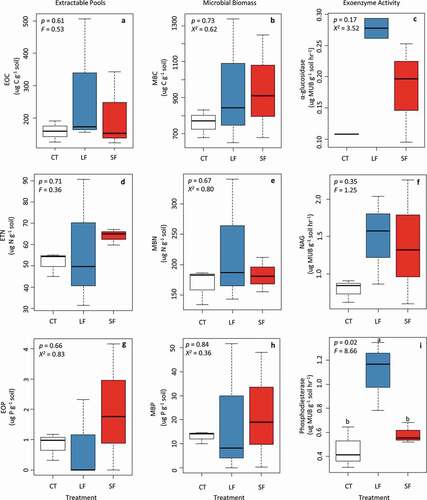Figures & data
Figure 1. Overview of study area located in two types of arctic tundra near Toolik Lake, Alaska. Yellow dots represent locations of experimental herbivore exclosures, with three fencing blocks in DH and four in MAT. Each block included a CT (no heribvores excluded), an SF (large and small heribvores excluded), and an LF (large herbivores only excluded). The fencing block designs are inlayed

Table 1. Mean and standard error for species diversity, species richness, and evenness of plant communities in 2017 from an herbivore exclosure experiment in two different tundra types: DH and MAT
Figure 2. Relative abundance of vegetation growth forms from an herbivore exclosure experiment located in MAT (n = 4) and DH (n = 3) tundra at the ARC-LTER located at Toolik Lake, Alaska. Data were collected in July 2017

Table 2. Impact of herbivores on soil variables after twenty years of exclusion. ANOVA and Kruskal-Wallis summary results from comparisons of soil variables between exclosures in DH and MAT
Figure 3. Box plots showing the impact of herbivores on (a), (d), (g) extractable organic nutrients, (b), (e), (h) microbial biomass, and (c), (f), (i) potential exoenzyme activity in soils collected in July 2017 from an herbivore exclosure experiment in DH (n = 3) tundra at the ARC-LTER located at Toolik, Alaska

